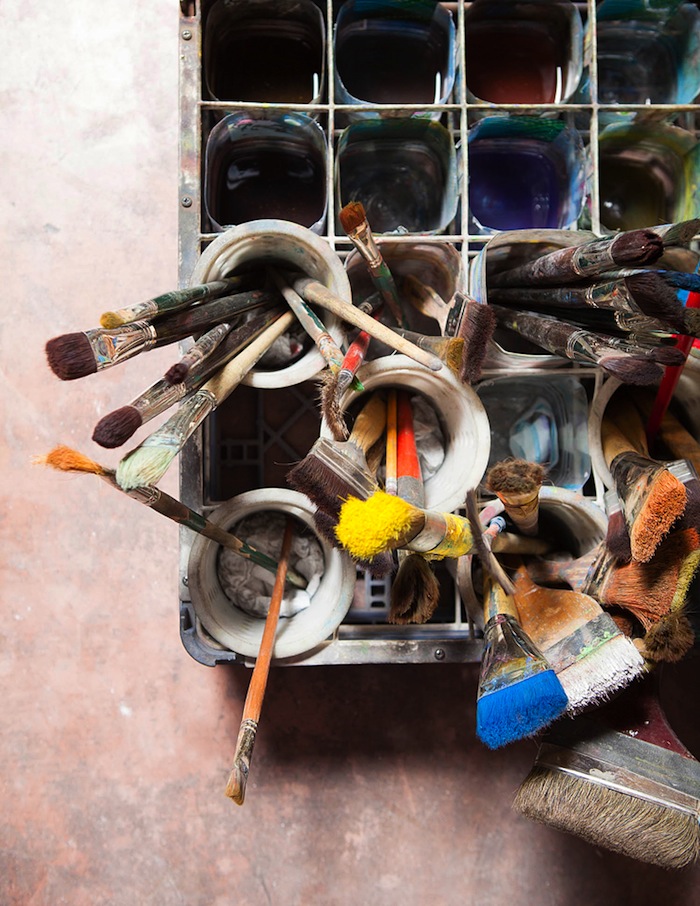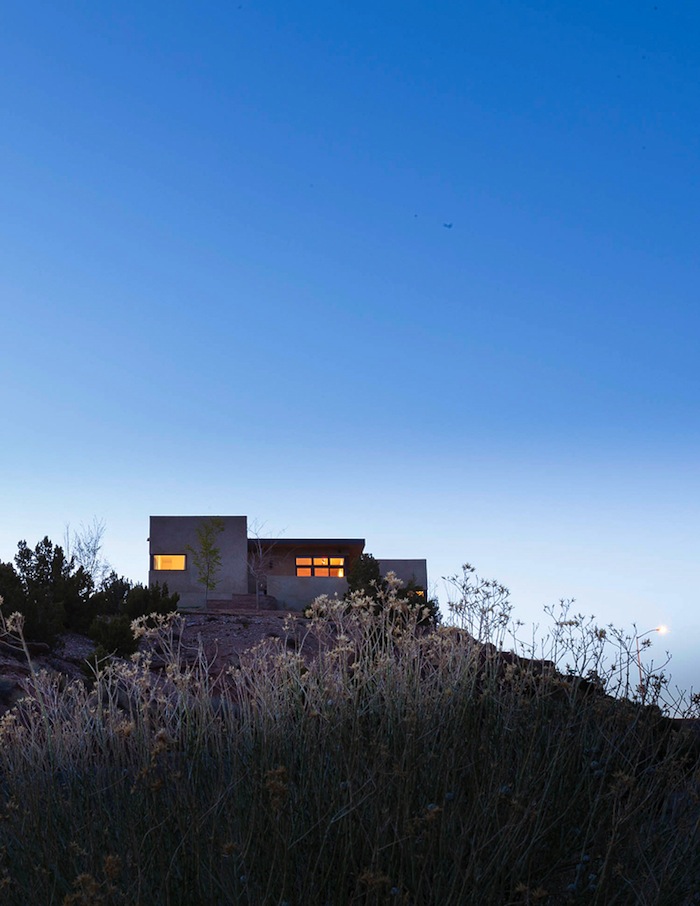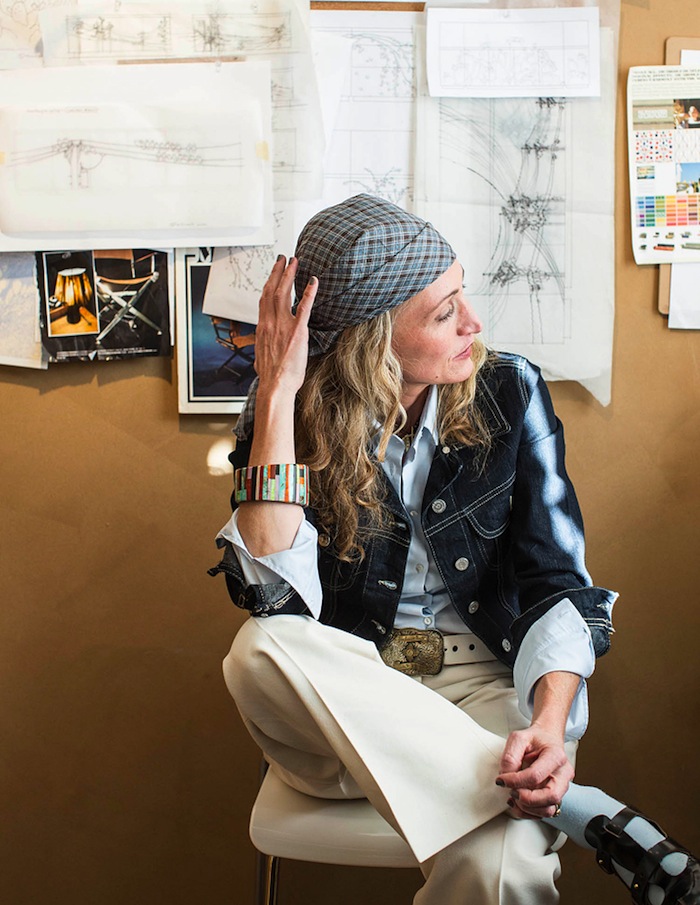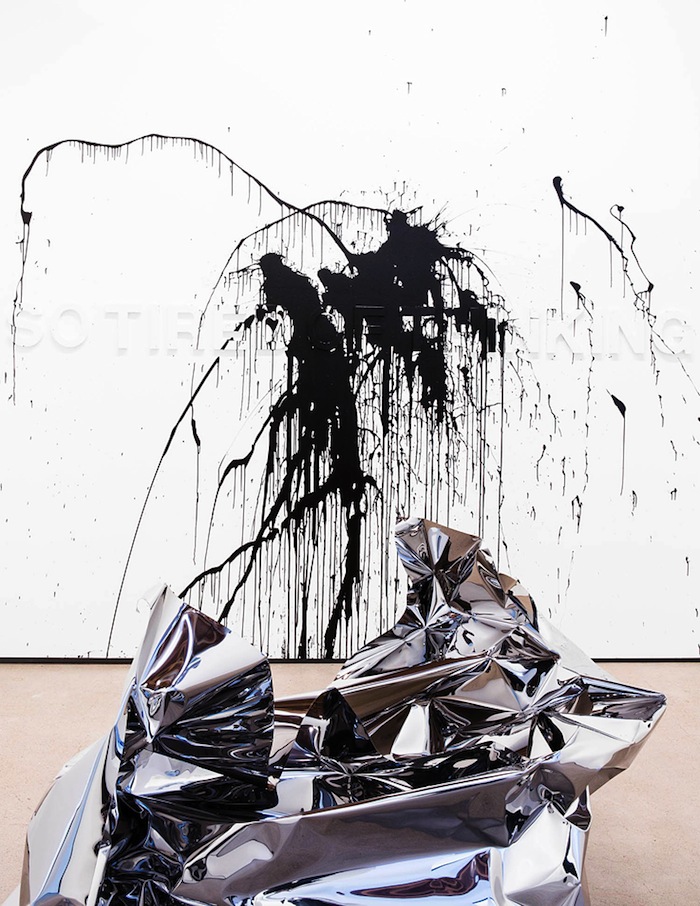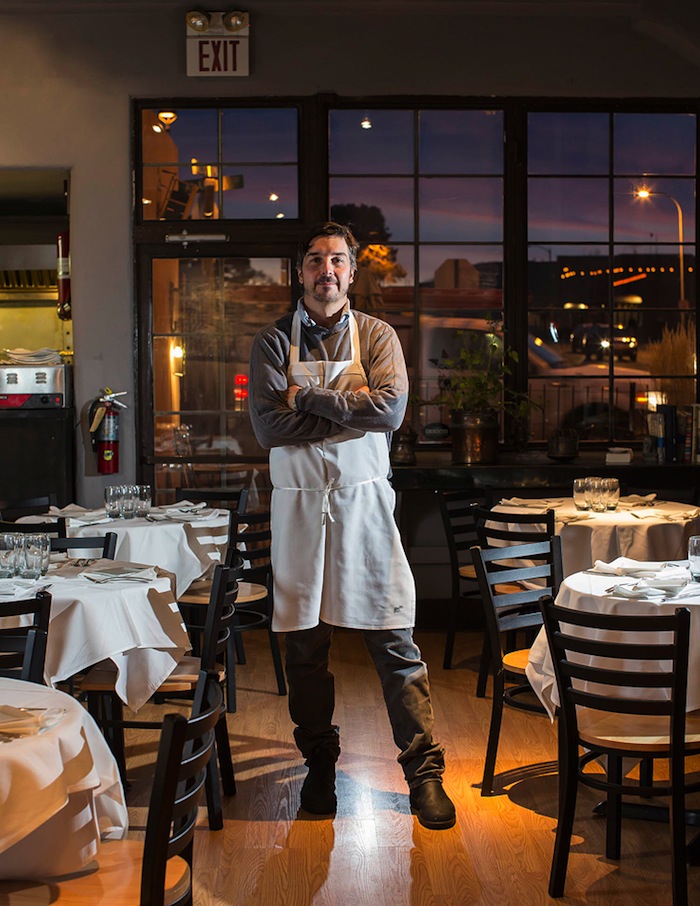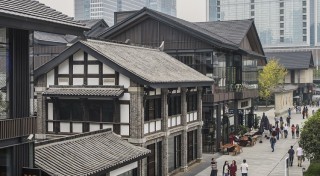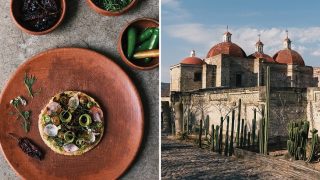In the weeks after meeting with Stanford and Henry, I begin to see the clash between antiquity and modernism that both alluded to everywhere in Santa Fe. A cluster of modern galleries—James Kelly Contemporary, David Richard, the internationally renowned SITE Santa Fe—crouch around the northeastern train terminus, the same rail line that put the city
on the national map in the mid-1800s. And downtown, the Museum of Contemporary Native American Arts sits in a traditional wood-beam adobe structure facing the stolid, Romanesque St. Francis Cathedral—begging the question of conquered and conqueror. It’s not only the influx of people that fuel Santa Fe’s creative side, it’s also the cultural, political, and artistic collisions that have resulted.
“Santa Fe encompasses that ‘Go West’ American spirit,” Stanford says. “It has always been about revival and innovation.”
***
Even swine can be art in Santa Fe. “I don’t nec- essarily want to make hamburgers or French dip all the time,” says Joseph Wrede, one of the most decorated chefs in New Mexico. “I want to say, ‘How do you fix a pig’s ear? How do you make it flavor-forward and delicious and really persuade people to want to eat it? How do you make art out of a pig’s ear?’ ”
Wrede, who made his name in the 1990s at his acclaimed Joseph’s Table in Taos, is talking to me one block from the Santa Fe Plaza at his latest restaurant venture, a corner café called Tomme that he took over three months ago. From the outside, the place looks like it might once have been a gas station. Inside, however, it’s done up in rich slates and toffees with filtered sunlight spilling through massive paned windows onto sumptuous abstract oil paintings. Funky at first glance but a stunning mix of self-assured hominess and sophistication once you get to know it, the restaurant is a lot like Santa Fe itself.
It’s hard to talk about “creative” Santa Fe without talking about its food. New Mexico has a rich culinary tradition steeped in its land (think corn and lamb). As with the culture, there are strong influences from across the southern border, with poverty-style stews and tortillas and classics like enchiladas and chile rellenos. The biggest difference between Mexican cuisine and Santa Fe–style cooking, however, is the two distinctive chili-pepper sauces, made from either fresh sweet green varieties or snappy, dried red ones. If there were a state quote, it would surely be the question posed by every waiter every single New Mexican restaurant every day of the year: “Red, green, or Christmas?”
“That’s the great thing about cooking here: the idea that your dish could be spicy. Anywhere else, that would be shocking, even in New York City,” Wrede says. Expectations are different here. People want spice. They come seeking variety. “There are less limitations as I approach my cooking, and that frees me up to branch out, to explore. I have more room to manipulate ideas and find my own voice and flavors.”
Wrede has done that with dishes such as his duck à l’orange, which he hints could incorporate the suggestion of green chilies. And he glazes the leg of lamb with local apples and plates the dish with indigenous dried corn called chicos. The flavors in each dish are as strong and subtle as a Rothko painting, yet the presentations are as bold and sculptural as a Miró. It’s veritable art for the palate. “There are a hell of a lot of people making art here, living in the arts,” he says, and it’s clear he’s not just talking about painters. “Santa Fe is all about the unconventional.”
Wrede’s expansiveness has me thinking about how the lack of expectations here has allowed me to develop my own voice. It also has me ready to try the pig’s ear, but it’s not yet on the menu. I promise to come back when it is. I almost feel like it’s my duty as a Santa Fean.



